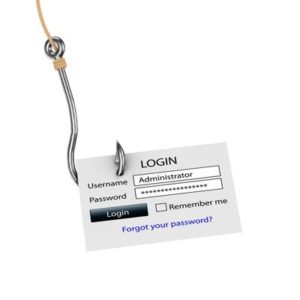Hackers are always trying to find creative and new ways to steal data and information from businesses. While spam (unwanted messages in your email inbox) has been around for a very long time, phishing emails have risen in popularity because they are more effective at achieving the desired endgame. How can you make sure that phishing scams don’t harm your business in the future?
Phishing attacks come in many different forms. We’ll discuss some of the most popular ways that hackers and scammers will try to take advantage of your business through phishing scams, including phone calls, email, and social media.
Phishing Calls
Do you receive calls from strange or restricted numbers? If so, chances are that they are calls that you want to avoid. Hackers will use the phone to make phishing phone calls to unsuspecting employees. They might claim to be with IT support, and in some cases, they might even take on the identity of someone else within your office. These types of attacks can be dangerous and tricky to work around, particularly if the scammer is pretending to be someone of authority within your organization.
For example, someone might call your organization asking about a printer model or other information about your technology. Sometimes they will be looking for specific data or information that might be in the system, while other times they are simply looking for a way into your network. Either way, it’s important that your company doesn’t give in to their requests, as there is no reason why anyone would ask for sensitive information over the phone. If in doubt, you should cross-check contact information to make sure that the caller is who they say they are.
Phishing Emails
Phishing emails aren’t quite as pressing as phishing phone calls because you’re not being pressured to make an immediate decision. Still, this doesn’t lessen the importance of being able to identify phishing messages. You might receive tailor-made customized phishing messages with the sole intent of a specific user handing over important information or clicking on a link/attachment. Either way, the end result is much the same as a phone call phishing scam;
To avoid phishing emails, you should implement a spam filter and train your employees on how to identify the telltale signs of these messages. These include spelling errors, incorrect information, and anything that just doesn’t belong. Although, phishing messages have started to become more elaborate and sophisticated.
Phishing Accounts
Social media makes it incredibly easy for hackers to assume an anonymous identity and use it to attack you; or, even more terrifying, the identity of someone you know. It’s easy for a hacker to masquerade as someone that they’re not, providing an outlet for attack that can be somewhat challenging to identify. Some key pointers are to avoid any messages that come out of the blue or seemingly randomly. You can also ask questions about past interactions that tip you off that they may (or may not) be who they say they are.
Ultimately, it all comes down to approaching any phishing incident intelligently and with a healthy dose of skepticism.







